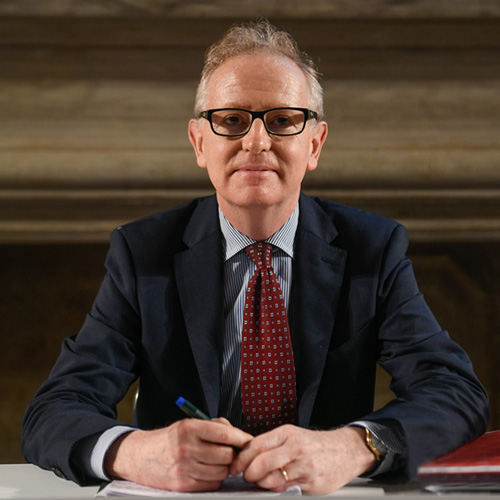
Massimo Rostagno explains the ECB’s Monetary Policy at BBS
28 March 2019Massimo Rostagno, Director General Monetary Policy of the European Central Bank, opened the Spring Edition of the Innovation Talks 2019 with the speech The crisis and the monetary policy of the European Central Bank. During the event, organized in collaboration with Philip Morris Italia, he discussed with the BBS Community the measures implemented by the ECB to respond to the crisis and their impact on the economic system of the Euro.
Today, there is a very active, lively and important debate on the EU and its institutions, in which, however, the historical memory of the long journey that has led to the monetary union of the member states, is often missing. “It is as if there was a collective amnesia on the facts, on the premises, on the ideas that guided this process. This leads the participants in the debate to have a narrow and unilateral vision,” began Massimo Rostagno, economist and researcher formed at the Bank of Italy, who joined the ECB in 1998.
Before analyzing the monetary policy of the last 5 years, it is necessary to understand the long path of economic unification that began already in 1969. The idea that some member countries could divest themselves of monetary sovereignty in favor of a collective body, appeared when the Prime Minister of Luxembourg was asked to draw a report on the possible monetary unification of the 6 countries which at the time formed the European Single Market (ESM). Twenty years later, in 1992, the Maastricht Treaty was signed by the twelve member countries of the European Community, establishing the political rules and the economic and social parameters necessary for the entry in the Union. The European Central Bank was then established with the aim to conduct the monetary policy of the Eurozone.
According to Rostagno, for many of the participating countries, this was a path of progressive sharing but also a reconquest of something they they had lost: monetary stability. “Many states look to the European Union for an anchor for their own currency that they cannot generate from within, with domestic institutions,” he added. In fact, the primary objective of the European Central Bank’s monetary policy is to preserve price stability, keeping the inflation rate at around 2% in the medium term.
The 20 years of growth of the Eurozone have been interrupted by the economic crisis of 2008 that in Europe, unlike in the rest of the world, has seen a succession of two contractions. “The crisis has led to sustained disinflation and the risk of deflation. In 2014, when bank rates were too high and interest rate transmission mechanisms were completely blocked, the ECB had to propose a completely new monetary policy,” commented Rostagno.
The ECB has indeed responded to the crisis with an innovative monetary strategy, based on 3 main instruments: interest rates brought for the first time to negative levels, the massive purchase of public and private securities and the introduction of TLTRO operations, through which loans are granted to credit institutions for periods of up to four years. “Thanks to these measures, since the end of 2016 and throughout 2017, we have seen a fairly vigorous recovery”, added Rostagno. “In 2019, the recovery slowed down but we are still retaining a great achievement. The unemployment rate has fallen steadily and we expect it to reach 7% by 2021.”
In response to the recent slowdown in the economy, the ECB announced a few weeks ago a new series of TLTROs to avoid a refinancing crisis of the banks, which will have in return to show evidence of a greater volume of loans to households and businesses. The second measure adopted is the so called forward guidance, a public communication strategy used by the Central Bank in order to condition, with its announcements, the expectations of the markets on the future levels of interest rates on the cost of money.
During the meeting, the journalist and Adjunct Professor of BBS Alessandro Merli questioned Massimo Rostagno about the reasons that led the Eurozone to brake again. Are these reasons external or self-inflicted by individual national economies? “Some influences come from overseas. The trade disputes of the United States have aroused great concerns in the entrepreneurs, creating mistrust effects already at the beginning of 2018. Added to this are the problems linked to the contraction of the German automotive sector which has a high impact on the economy of one of the stronger member states of the Union. Finally, the Brexit also represents a further factor that affects the climate of confidence of countries linked to Great Britain, such as Germany, Holland and France.”
However, there are also several structural causes of degrowth within individual countries, on which the ECB’s monetary policy cannot intervene. This is for example the case of Italy, which has marked a negative result on all the components of the productivity rate for almost 30 years.
Massimo Rostagno concluded his speech with an optimistic reflection on a future that, in order to exist, needs a present that looks ahead without forgetting the path already traveled: “It is hoped that the world we have known, a world of trade opening, of dismantling duties and barriers, would never have to look back.”
